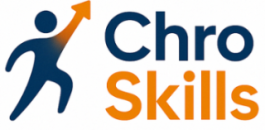
Understanding the Evolving Role of a CHRO
Adapting to New Responsibilities
The role of a Chief Human Resources Officer (CHRO) is continuously evolving in response to the shifting landscape of business and society. As organizations become more complex and the workforce more diverse, the expectations from a CHRO have crossed the traditional boundaries of human resources. They are no longer about merely managing recruiting processes or handling compliance issues. Indeed, a CHRO nowadays is seen as a pivotal player in shaping the strategic direction of a business.
This transition is deeply rooted in the necessity to align human resource practices with wider business goals, a theme explored in strategic vision and business acumen. Cultivating a comprehensive skill set has become crucial for effectiveness in this high-stakes role. This involves developing an understanding of market trends, adapting to new technologies, and fostering employee development initiatives.
Meeting Modern Demands
Moreover, CHROs are tasked with navigating a myriad of modern challenges including maintaining compliance amid frequent regulatory changes and ensuring companies are equipped with the essential tools and best practices for long-term success. This encompasses implementing robust performance management systems and employing services such as employee handbook development and job description refinement.
Additionally, with the rising importance of diversity and inclusion, CHROs are being called upon to lead initiatives that foster an inclusive work environment, which is vital not just for employee satisfaction but for enhanced business performance.
Future-Proofing Resources
ThinkHR offers essential resources and certified advisor services that help CHROs and their teams in upskilling through training courses and programs. In a rapidly changing business environment, continuous learning and human resource management system updates become pivotal. These tools help CHROs not only respond to immediate needs but also develop a workforce resilient to future challenges, maximizing return on investment.
Ultimately, it is this adaptability and forward-thinking approach that empowers CHROs to act decisively and maintain their departments as key drivers of organizational growth and development.
Strategic Vision and Business Acumen
Crafting Strategic Vision for Business Success
The role of a Chief Human Resources Officer has evolved to include a critical focus on strategic vision coupled with strong business acumen. Modern CHROs are expected to not only understand but also anticipate shifts in the business landscape, ensuring that their organizations remain competitive and agile in an ever-changing market. A key facet of this skill is the ability to align HR strategies with business objectives, seamlessly merging corporate goals with human resources initiatives. CHROs must possess an in-depth understanding of how various plans, including those for training and employee development, can drive performance and facilitate growth. Developing a comprehensive employee handbook, maintaining compliance, and offering best practices are all essential tools in the CHRO’s arsenal. Strategic vision also encompasses effective resource management and leveraging business solutions to maximize return on investment. This requires CHROs to engage with certified advisors and utilize a robust management system to oversee employee performance. By considering the intricate web of resources, services, and compliance requirements, a CHRO can adeptly craft strategies that benefit both employees and the business as a whole. Additionally, a solid grasp of management techniques is necessary for developing job descriptions that accurately reflect organizational needs and drive the recruitment of top talent. This knowledge allows companies to offer targeted training courses and employee training programs that support individual and team growth. Moreover, in today's technology-driven world, it’s crucial for CHROs to explore talent platforms that offer innovative resources for skills enhancement. These platforms can provide essential insights and content that empower CHROs to think critically and take strategic action within their organizations.Leadership and People Management
Building Effective Leadership with People Management
Effective leadership in human resources goes beyond managing day-to-day operations. With the evolving role of a Chief Human Resources Officer, the focus shifts towards fostering growth in people management, which is vital for aligning personnel capabilities with the business's strategic objectives. Resources and services related to performance management play a critical role in this regard.
Being adept at fostering strong leadership is essential. Here's how CHROs can develop the necessary skills:
- Learn and Adapt: Continuous learning through training courses like those offered by thinkhr ensures that CHROs stay ahead in compliance and human resource practices. Certified advisors can help navigate these training thinkhr options effectively to handle regulations change.
- Securing Compliance and Regulation Mastery: Maintaining compliance requires the ability to manage and update the employee handbook and ensure that employee training programs meet the required standards. Business solutions often include these elements as standard practices.
- Action-Oriented Performance Management: By integrating performance management systems, CHROs can drive employee performance towards achieving business objectives. Understanding how to align job descriptions with skills is part of maintaining a vibrant work environment.
- Develop Communication Skills: Effective resource management relies on the ability to clearly communicate expectations and provide feedback. This includes utilizing tools and technology to ensure that communication is streamlined.
- Think Strategically: CHROs need to think beyond traditional HR functions and align people management strategies with the overall business vision to maximize return on investment from human resources.
In today’s dynamic business environment, being proficient in people management is an essential skill for CHROs seeking to connect their teams with strategic goals effectively.













